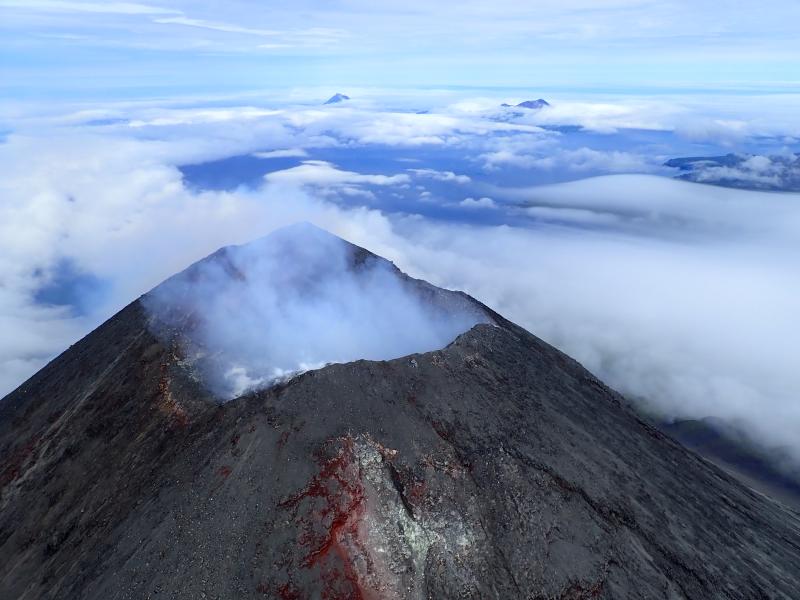
The USGS reports “elevated” activity at 7 different volcanoes around the U.S. it observes, with three at a heightened ORANGE / WATCH and four at a YELLOW / ADVISORY.
The Volcano Hazards Program Office, through regional groups responsible for volcanoes of concern within their geographic area of concern, is responsible for issuing Aviation Codes and Volcanic Activity Alert Levels. Aviation Codes are green, yellow, orange, or red. When ground-based instrumentation is insufficient to establish that a volcano is at a typical background level of activity, it is simply “unassigned.” While green means typical activity associated with a non-eruptive state, yellow means a volcano is exhibiting signs of elevated unrest above known background levels. When a volcano exhibits heightened or escalating unrest with the increased potential of eruption, it jumps to orange. Finally, when an eruption is imminent with significant emission of volcanic ash expected in the atmosphere or an eruption is underway with significant emission of volcanic ash into the atmosphere, the code becomes red. Volcanic Activity Alert levels are normal, advisory, watch, or warning. As with aviation codes, if data is insufficient, it is simply labeled as “unassigned.” When the volcano is at typical background activity in a non-eruptive state, it is considered normal. If the volcano exhibits signs of elevated unrest above background level, an advisory is issued. If a volcano exhibits heightened or escalating unrest, a watch is issued while a warning is issued when a hazardous eruption is imminent.
As of the publication of this article, Semisopochnoi, Great Sitkin, and Pavlof volcanoes are all at ORANGE / WATCH while Cleveland, Pagan, Mauna Loa, and Kilauea are all at YELLOW / ADVISORY.
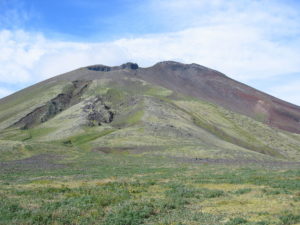
Semisopochnoi, Great Sitkin, Cleveland, and Pavlof volcanoes are all located in Alaska while Mauna Loa and Kilauea are in Hawaii. The Pagan volcano is located in the northern Mariana Islands north of Guam.
Based on its location on the globe at 179°46′ East, Semisopochnoi is the easternmost land location in the United States and North America, located just 9.7 miles west of the 180th Meridian in Alaska. Semisopochnoi is part of the Aleutian Islands, a chain of 14 large volcanic islands and 55 smaller other islands. These islands, with their 57 volcanoes, make the northernmost part of the Pacific Ring of Fire.
Semisopochnoi saw explosive activity earlier this week that prompted the Alaska Volcano Observatory (AVO) to upgrade the concern there to RED / WARNING. While unrest continues there, there’s only discrete low-level ash producing explosions there, resulting in a drop to ORANGE / WATCH.
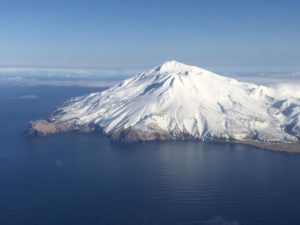
Great Sitkin is at an elevated ORANGE / WATCH level because of ongoing unrest and elevated surface temperatures observed in satellite data.
The Great Sitkin Volcano is a basaltic andesite volcano that occupies most of the northern half of Great Sitkin Island, a member of the Andreanof Islands group in the central Aleutian Islands. It’s located roughly 26 miles east of Adak, which is 1,192 miles southwest of Anchorage. According to the AVO, the volcano has a composite structure consisting of an older dissected volcano and a younger parasitic cone with a 1.8 mile diameter summit crater. A steep-sided lava dome, emplaced during an eruption in 1974, occupies the center of the crater. Within the past 280 years, a large explosive eruption here produced pyroclastic flows that partially filled the Glacier Creek valley on the southwest flank.
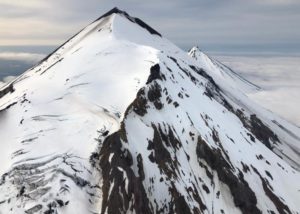
Pavlof Volcano is a stratovolcano located on the southwestern end of the Alaskan Peninsula just under 600 miles southwest of Anchorage. The volcano is about 4.4 miles in diameter and has active vents on the north and east sides near the summit. According to USGS, the volcano has had more than 40 historic eruptions, making it one of the most consistently active volcanoes in the Aleutian Arc. The Aleutian Arc is on the Pacific Ring of Fire.
The Ring of Fire is a region around the rim of the Pacific Ocean where many volcanic eruptions and earthquakes occur. Caused by plate tectonics, lithospheric plates under and around the Pacific Ocean move, collide, and/or are destroyed, creating the seismic activity the Ring of Fire is famous for.
According to AVO, “unrest continues” at Pavlof, with an “explosive event detected” on both webcam and seismic data. This volcano has been at this heightened alert level since early August.
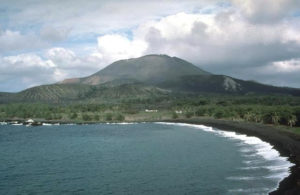
The USGS Northern Mariana Islands office (NMI) is tracking activity at the Pagan Island volcano of Mount Pagan. Unfortunately, data is very limited at that volcano. Severe weather and years of no repairs have left geologists there nearly blind to what’s happening at the surface. In the latest NMI update for July, they report, “Ground-based geophysical monitoring data from stations on Anatahan and Sarigan islands have been unavailable since storm damage in August, 2017. Current logistical challenges in the CNMI prevent visiting these sites to make repairs. A timeline for returning these stations to operation is uncertain.”
While there’s limited observation equipment at the surface, NMI reports that satellite photography has revealed no recent volcanic activity. While some volcanic activity was reported by locals earlier this month, the activity seems to have paused for now.
A large, potentially dangerous volcano isn’t erupting yet, but scientists say odds have increased of eruptive activity at the Cleveland Volcano. This large stratovolcano, located in the Islands of Four Mountains group of the Aleutian chain in Alaska, is 5,676 feet tall and nearly perfectly symmetrical. One of the most active volcanoes in the Aleutian Arc, Cleveland has erupted at least 22 times in the last 230 years. Most recently Mount Cleveland has erupted three times in 2009, twice in 2010, once in 2011 and in 2016 and 2017. A small eruption occured on June 2 last year.
While AVO reports no unusual activity has been observed in satellite or seismic data, unrest continues at the Cleveland Volcano.
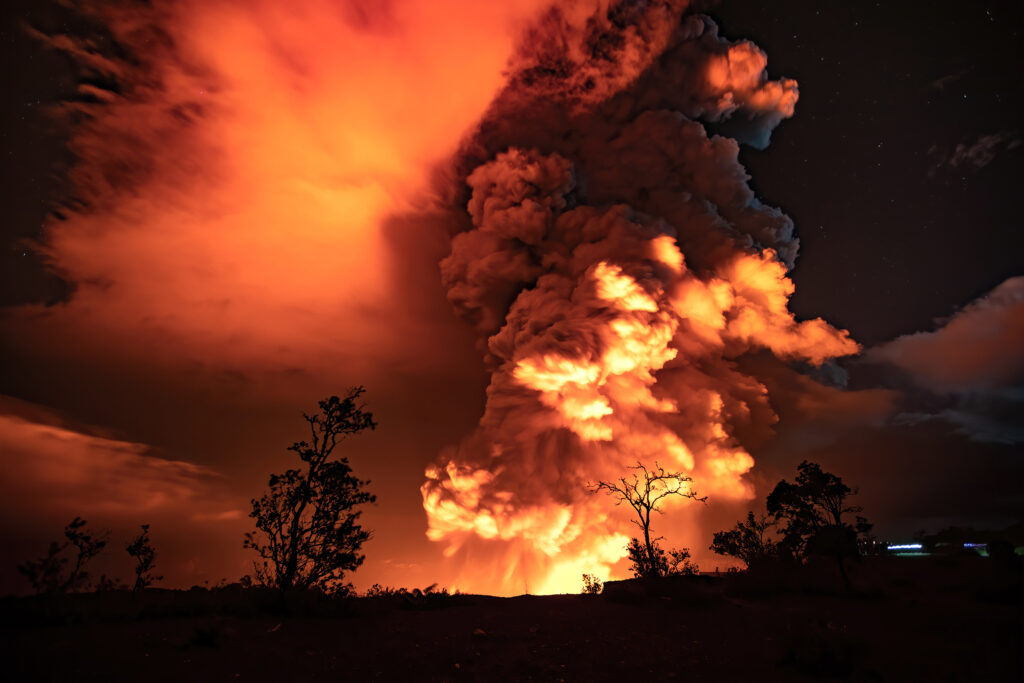
The Hawaii Volcano Observatory (HVO) monitors the Kilauea, Mauna Loa, and Hualalai volcanoes on the Big Island of Hawaii. Mauna Loa is considered the world’s largest active volcano. None of Hawaii’s volcanoes are currently erupting, but seismicity remains above background levels at both Kilauea and Mauna Loa.
While there’s activity and unrest at the volcanoes in Alaska, Hawaii, and the Northern Mariana Islands, no volcano on the U.S. mainland is exhibiting any sign of unrest or activity as of publication of this article.